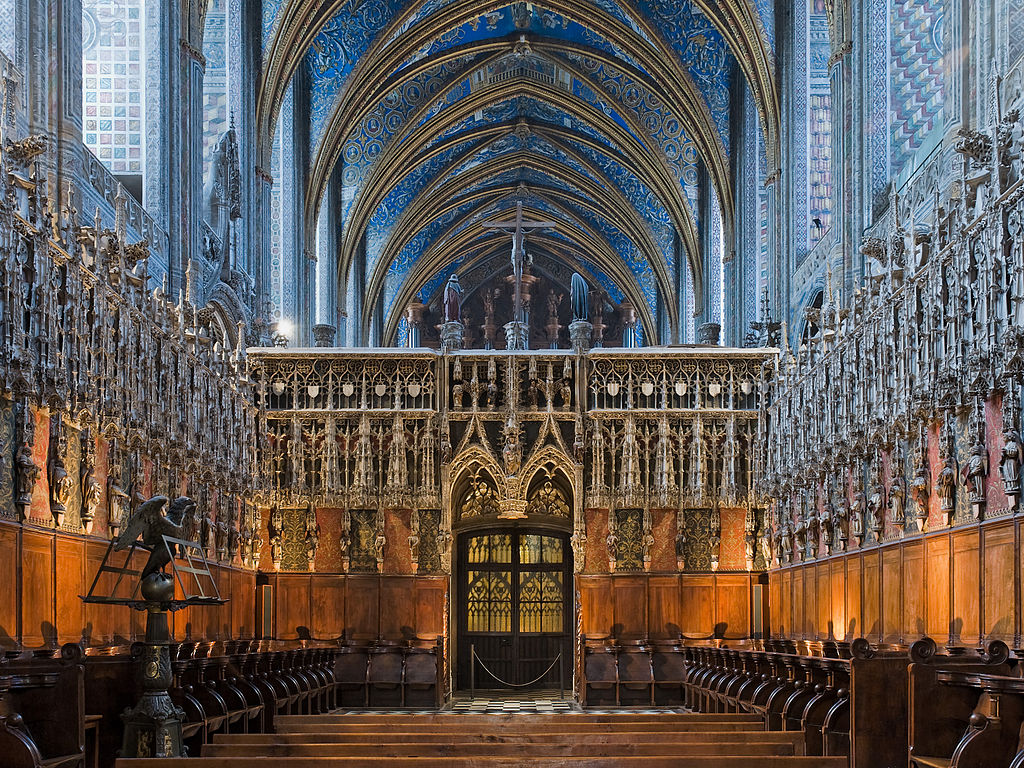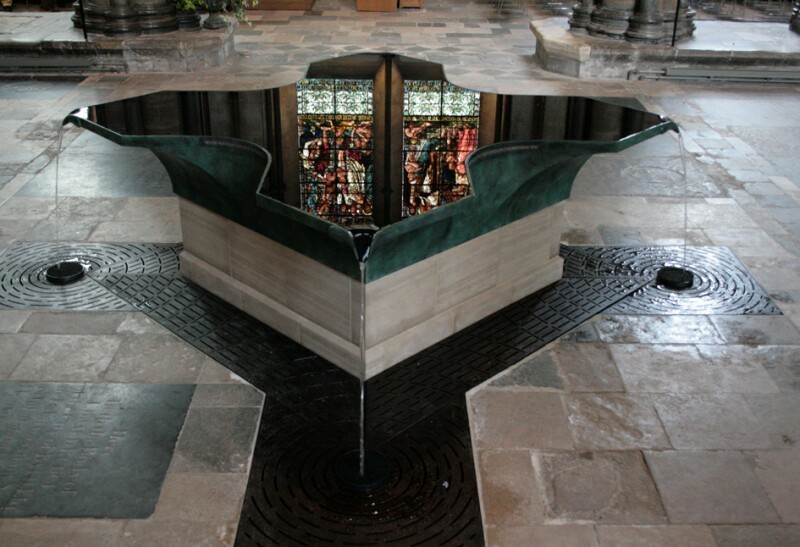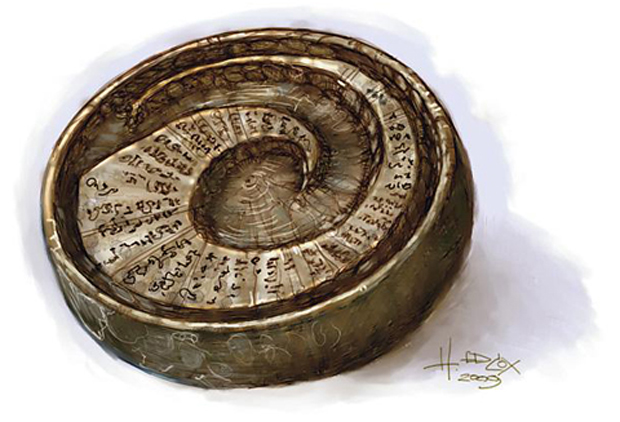Great Temple of Melora
Architecture
Pre-Renovation:
The trees used to build the initial shrine to Melora were mangroves, trees capable of absorbing salt water. This made them the ideal choice for a construction near the sea, although they were magically accelerated to reach large proportions in short amounts of time. For the remainder of the initial shrine's existence, mangroves became associated with the cult of Melora, being a perfect example of coexistence between the sea and the forest.
Post-Renovation:
Outside:
Towering white walls, roof painted with light-blue dye. pavements outside were made of blue-toned marble stone limited by white marble edges.
Forfeiting the old traditions in favor of their own personal ideals, the wealthy citizens who built the Great Temple of Melora disregarded the previous use and symbolism of the mangrove in favor of other more aesthetically pleasing flora. The gardens were then filled with well trimmed oaks and pines, considered more fitting for such a location.
Inside:
The polished stone slabs that pave the floor echo the clear sound of footsteps whenever someone walks into this grandious building's spacious halls
Mainly white, with several ornaments in precious gold inside and between chambers. most colored marble slabs were used on the center of the floor and between columns, to enhance their content. Lots of painted depictions of the goddess in its several domains, with several finely-carved statues of the goddess. The main chamber of the temple presented a gigantic statue comprised of a combination of white-marble, light blue marble, and gold. Ceilings painted blue or golden with occasional constellations mostly seen in high-seas. Side chambers separated by finely-crafted gridded golden doors, filled with complex patterns that allowed visitors to gaze to the chamber on the opposing side while simultaneously appreciating the fine craftsmanship used on the patterns comprising the door itself. These semi-opaque doors granted an ever larger appearance to the main chamber than it actually had, on top of its already gigantic proportions. each column's capital adorned with either gold or precious stones in intricate patterns resembling Melora's wilderness domain, in combinations of beasts,fishes , vines, waves or flowers. Most of the ceiling and upper walls were painted in several depictions of the goddess and its many domains, retaining a general tone of white, blue and gold. On one of the side chambers, there are depictions of what is considered to be Melora's single champion in Rendära-düh, [PH] Eladrin King.
Not sparing any resources to make the Great Temple of Melora a dashing example of the wealth of its surrounding citizens, the patrons of this site made sure to include exotic representations of the goddess' domain even within the temple. a complex system of fountains and water cascades was used to echo the delicate sound of running water to every corner of the several rooms and halls inside the temple.Expert mages in illusions were summoned to place permanent runes in several of the nature-alluding statues, giving out a feeling that the statues might move at any second.
At the top of main walls, large windows were artistically carved in the stone, letting in the sunlight from dusk to dawn, which shone on the varied reflective precious metals and gems, illuminating the interior of temple ever further. However, even at night the dark did not rule over the temple's halls, as the very water running inside the temple was enchanted to shine with a blue-ish glow.
History
Early History
The first recorded shrine to a deity resembling Melora was originally created by the Eladrin after their arrival in Rendära-düh, as a place of worship to their One Goddess, it also became a place to honor [PH] Eladrin King , for its legendary deed of leading his fleet of a dozen ships across the The Abyssal Current.
Due to the passage of time, the consequent melding of truth and myth, and the mixing of cultures and ideals in the region, this temple eventually turned into a place of worship for what became known as the native deity named Melora.
When it was initially built, the Eladrin decided to place it in the easternmost edge of the region, so as to be closer to their homeland. According to their tradition it was also built using solely the bodies of living trees from seeds they carried with themselves. Older records claim the trees grew big enough to house a shrine the size of a large barn.
As is known from historical records pertaining Fyr-Elfhafen, the city has been a target for naval raids since ancient times. Scholars suspect the northern began after the city grew to a considerable size, justifying the dangerous northern excursions with promises of treasure and loot. Although records vary on the specifics of the date, most sources are in agreement as to the destruction of this first sanctuary by a large fire. Although the exact causes of this fire are unknown, most sources claim the occurrence predates the construction of Fyr-Elfhafen's stone walls, leading to theories about how the initial shrine to Melora, made from living trees, was destroyed as a consequence of a northern raid.
Later History
It is believed that most sacred texts and tomes regarding the cult of Melora were lost in the fire that destroyed the initial temple, causing the common knowledge in the population to be the single source for the cult that of Melora that followed the shrine's destruction.
As the cult of Melora was particularly common among the citizens whose occupations were directly related to the sea (sailors, merchants, fishermen), a new place of worship was built by the existing community. This time, the shrine was made using wood in human-like architecture, as the knowledge to building structures using living trees had long since been lost. It is believed, due to the records of construction of this place of worship, that this site was actually the Minor Temple of Melora, still present when the city was turned into ruin in 3385. However, alongside the construction of stone fortifications in the city, it is known that the wealthiest citizens at the time had already begun to segregate themselves from the rest of the local population in a separate island. As the cult of Melora was prominent even among the higher classes, the need for a specific place of worship arose. In order to remain isolated from those they considered less worthy, the wealthiest citizens of Fyr-Elfhafen took it upon themselves to fund the construction of a larger, stone temple to overshadow the one built by their less wealthy counterparts. Using the recent influx of stone into the city through the The Drakkenhed, this new temple was constructed using several types of polished stone.
As a consequence of the lack of formal, written tenets for the worship of Melora at the time of construction this temple, most scholars agree that some ideals characteristic to Melora's cult at the time were lost. This could explain how with time, there is a divergence in records, regarding Melora's take on civilization transitioning from a harsh opposition to a state of passiveness. Some scholars believe the commercial interests of the wealthiest citizens in the city influenced how the cult progressed in Fyr-Elfhafen, by guiding the construction of the new Great Temple of Melora, with all the depicted holy symbols.
RUINED STRUCTURE
3385
3385
Type
Cathedral / Great temple
Parent Location
Owner
Owning Organization
Melora's sigil remained a part of her cult throughout all social classes, being a frequent component in the art present in this temple. It can be seen in the several ample door arcs, in the necklaces worn by the characters depicted throughout the several wall paintings and even in the gigantic throne belonging to the great statue of Melora in the main hall.
Never has this city ever seen such a work of art as this House to the Lady of the Sea. May it bring prosperity to us all!
Remove these ads. Join the Worldbuilders Guild












Comments